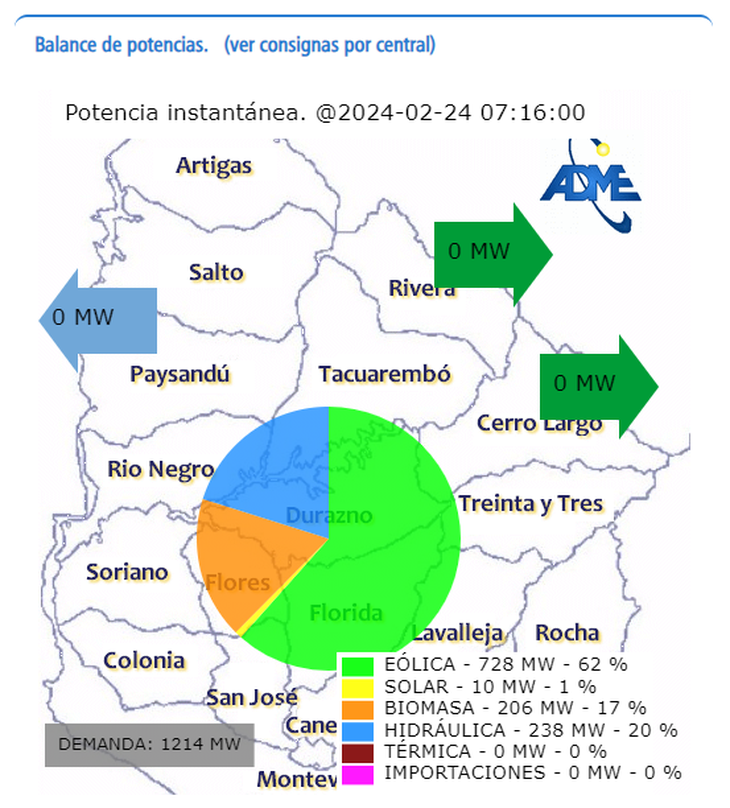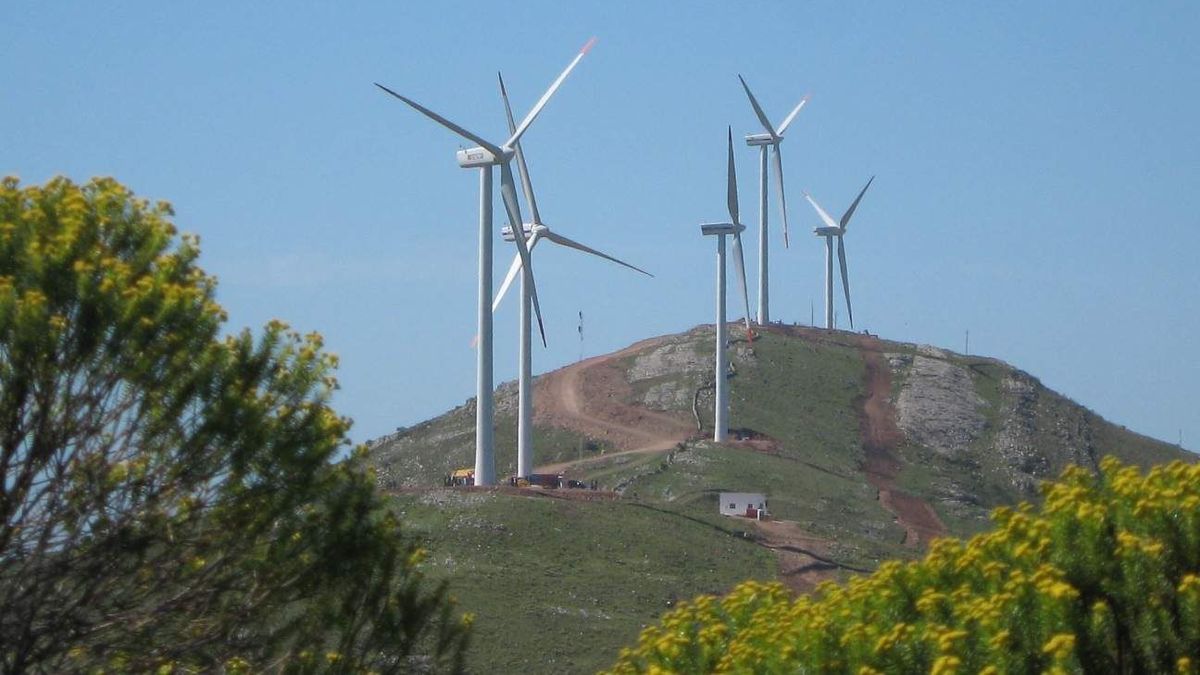The Electricity Market Administration recorded that the total daily electricity generated in the country was through renewable energy, with wind and hydraulic power topping the list.
Uruguay reached today a 100% renewable generation, while the National Administration of State Electrical Power Plants and Transmissions (UTE) consolidated itself as the largest exporting company at the start of the year.
The content you want to access is exclusive to subscribers.
In the daily publication of the Electricity Market Administration (ADME) a milestone was observed in terms of renewable energy in the country: 100% of the day’s electricity generation was produced with renewable sources.


In that sense, and as the ADME graphs show, the day’s electricity production is lowered by wind power in 50.8%; in the hydraulic energy by 30.9%; in the biomass by 15.7%; and in the solar by 2.7%.
Renewable energy Uruguay ADME.png

Uruguay reached 100% of its electricity generation from renewable sources.
ADME
In turn, so far this month, the percentages of electricity generation are 49.9% for hydraulic, 32.2% for wind, 13.6% for biomass, 4% for solar and barely 0.3% for thermal energy.
UTE leads exports of the year
For its part, UTE was the company that gave the greatest boost to goods exports in January, according to a report from the International Business Institute (INI) of the Catholic University of Uruguay (UCU).
In total, there were 235 exporting companies with sales of more than $100,000, while 106 managed to exceed one million. Among them, the most notable was UTE, with placements for 144.8 million dollars, a year-on-year increase of 107%. With that amount, the company that runs Silvia Emaldi represented 15.6% of the total exported without counting free trade zone.
The significant increase not only responds, it is a great present of electricity generation in Uruguay —which allowed 69.1 GWh to be exported to Brazil and Argentina so far this year—but also to the comparison made with last year, at times when the drought and the beginning of the water crisis forced the state company to import energy to supply the domestic market in a less expensive way than through thermal energy.
Source: Ambito




